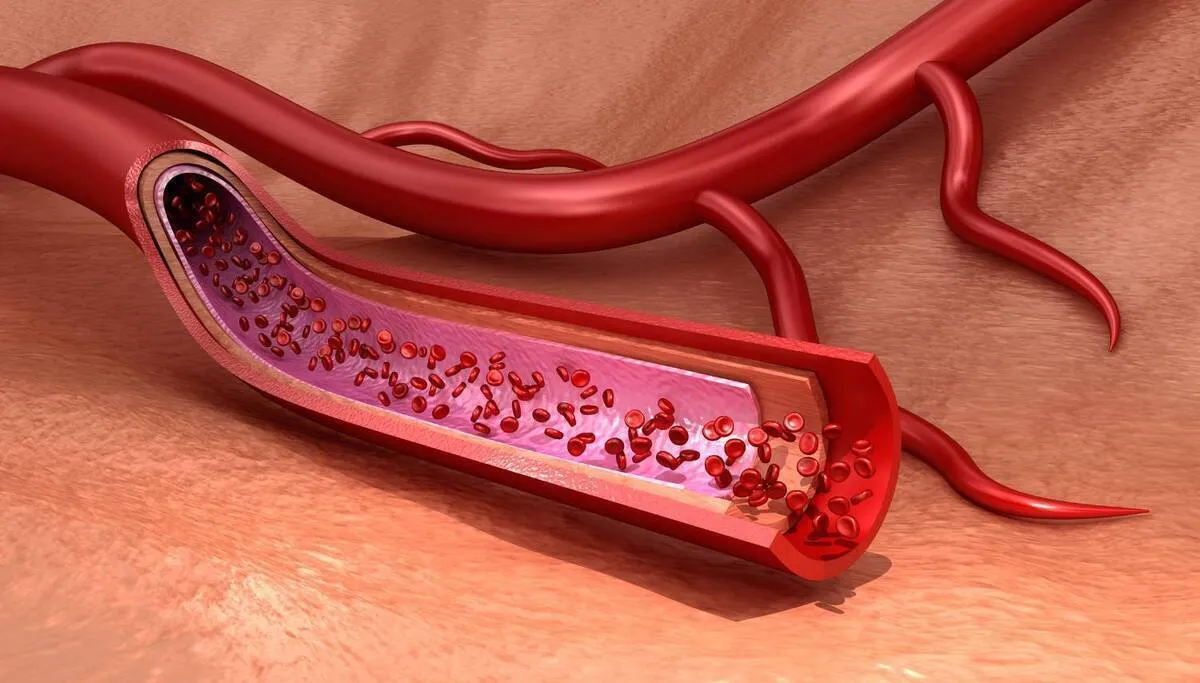Atherosclerosis Shows Tumor-Like Cell Growth, Surprising Scientists

Researchers from the University of Southern Denmark and Odense University Hospital have studied tissue from patients with atherosclerosis. They found that many of the cells in the affected tissue carried the same genetic alteration and appeared to come from a single ancestral cell that had divided repeatedly, a pattern typically seen in tumor development, the journal JCI Insight reported.
In several patients, a large number of cells had originated from one mutated cell that went through many rounds of division.
“It’s striking how many cells in the tissue share the exact same genetic change. In several samples, more than 10 percent of the cells — hundreds of thousands — carried the same alteration. It’s difficult to interpret this as anything other than all these cells originating from a shared ancestral cell that, at some point during disease development, acquired the mutation,” said Lasse Bach Steffensen, Associate Professor at the Department of Molecular Medicine at the University of Southern Denmark.
In tumors, disease often begins when a single cell gains a genetic change that causes it to divide excessively. As its daughter cells inherit the same change and continue dividing, the result is a growing mass of altered cells — a tumor.
This discovery offers a new way of thinking about atherosclerosis, a disease most often linked to cholesterol, inflammation, and lifestyle.
While the researchers cannot yet say whether the mutations directly influence the disease, the changes do not appear to be random. Many of the affected genes may influence how cells behave, and potentially impact the progression of the disease.
Atherosclerosis is one of the leading causes of death in Denmark and around the world. It leads to blood clots in the heart and brain and is currently treated mainly with medications that lower cholesterol and blood pressure. However, there is still no treatment that directly targets the affected vessel wall.
The results of the new study suggest that the cells in the affected tissue undergo numerous rounds of cell division possibly due to mutations in their genetic material – similar to what is observed in tumor development.
We’re not saying that atherosclerosis is a “blood vessel tumor.” But our data point to a possible interplay between genetic alterations and extensive cell division – something we typically associate with tumor biology, says Lasse Bach Steffensen.
This gives us a new biological understanding – and possibly new ideas for treatment.
The study is based on tissue samples from patients who underwent vascular surgery at Odense University Hospital and Kolding Hospital. The samples were analyzed using DNA sequencing and compared with the patients’ blood DNA to identify alterations unique to the vessel wall.
The tissue samples originate from a research biobank that has existed at OUH since 2009. The project is the result of many years of collaboration between surgeons, theatre nurses, biochemists, and – most importantly – patients who voluntarily donated tissue for research.
Lasse Bach Steffensen emphasizes that the study so far includes only a small number of patients and that more research and other laboratory methods are needed to determine the significance of the genetic alterations in disease progression.
We are now analyzing tissue from many more patients to explore links between the mutation burden in atherosclerosis, disease stage, and clinical data. It’s possible we’ll begin to see atherosclerosis in a new light in the future, he says.
Atherosclerosis is a disease characterized by the accumulation of lipids, inflammatory cells, and connective tissue within the walls of blood vessels. This buildup causes the vessels to become stiff and narrow, limiting blood flow.
The disease is initiated when cholesterol particles are retained in the vessel wall. The immune system perceives this as an injury, triggering a chronic inflammatory response. Over time, this leads to the formation of a mass of tissue and cells called a plaque, which can grow and progressively reduce blood flow through the vessel. Plaques can also rupture, causing the rapid formation of a thrombus, which can result in serious events such as heart attacks or strokes.
Atherosclerosis is influenced by both lifestyle and genetic factors. Smoking, high blood pressure, elevated cholesterol, obesity and physical inactivity all increase the risk. Although symptoms typically appear later in life, the disease process often begins during adolescence.
Atherosclerosis is a leading cause of heart attacks and strokes, and remains one of the most common causes of death in Denmark.
Genetic alterations – also known as mutations – occur when changes arise in the DNA of cells. These changes happen naturally over the course of life and do not necessarily cause disease.
Most genetic alterations have no effect, but some can cause cells to behave differently – for example, by dividing more rapidly or acting abnormally.
In this study, the researchers found many cells in atherosclerosis-affected blood vessels that shared the same genetic alteration.
4155/v





















